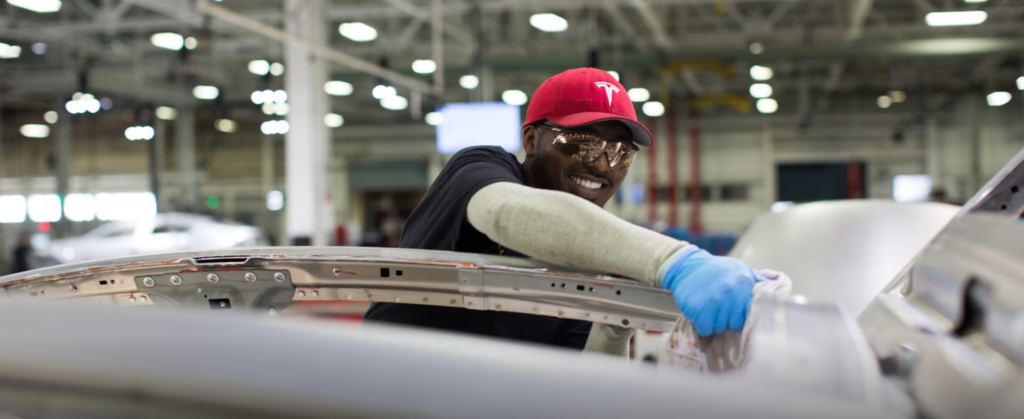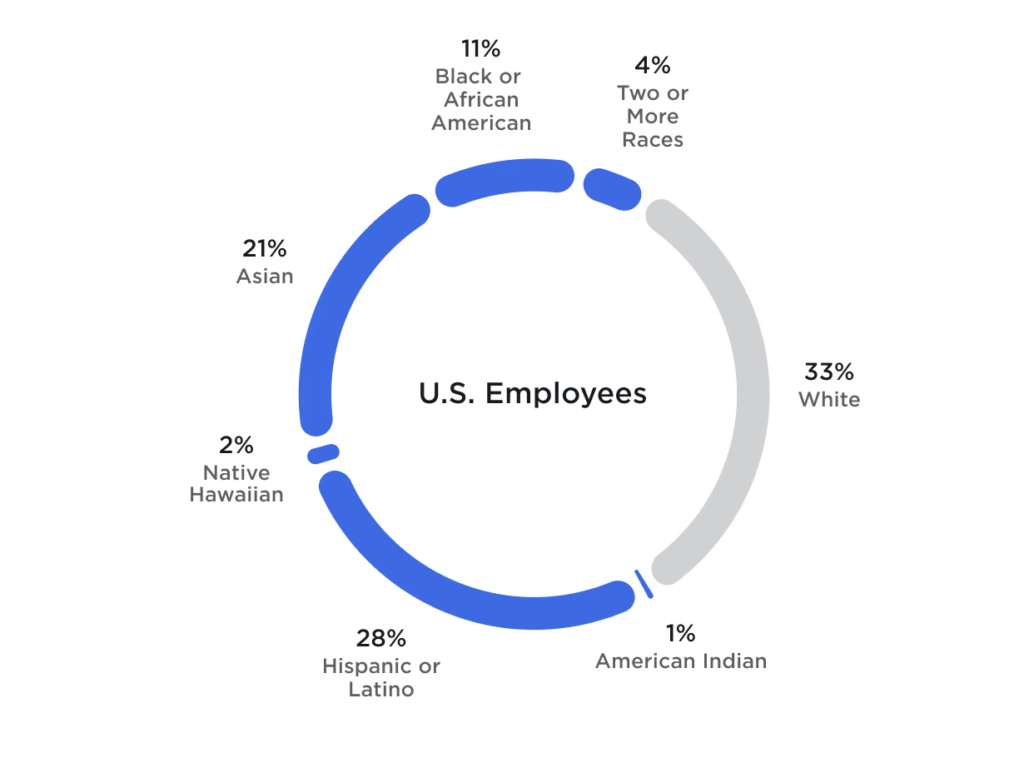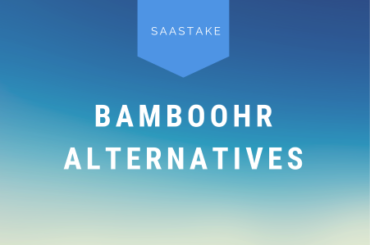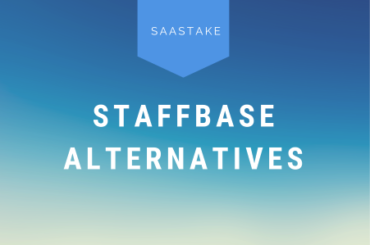Famous for electric vehicles (EVs) and solar panels, Tesla is a company synonymous with simultaneous innovation and sustainability. After 20 years, Elon Musk brought the eco-tech company to a net worth of $544 billion — but he didn’t do it alone.
The company is backed by a workforce of over 127,000 full-time employees as of 2022. Yet amidst infamously high job expectations and long hours, Tesla has a robust employee engagement plan to maintain employee well-being, satisfaction, and productivity.
“I think it’s possible for ordinary people to choose to be extraordinary,” said Musk.
So, how does Tesla nurture its extraordinary talent through engagement? The formula is a combination of employee autonomy and recognition alongside competitive compensation.
We’ll dive deeper into the components of Tesla’s employee engagement approach and review a few quotes from both employees and Musk himself.
Tesla’s Employee Engagement Approach
Tesla’s employee engagement approach centers around empowering its workforce and recognizing their contributions. By providing competitive wages and benefits, fostering open communication through an integrity line, and promoting diversity and inclusion, Tesla creates an environment where employees feel valued, motivated, and proud to be part of the company’s mission.
- Competitive Wages and Benefits
Can you think of something more motivating at work than money? It’s fair to come to a blank — after all, you’re working to be compensated. That’s why competitive wages and benefits are proven drivers of employee engagement.
Pizza days and friendly emails don’t come close to the engagement you’ll feel if you’re happy with your salary, and Tesla knows that.
Zippia reports that the average Tesla employee makes nearly $110,000 per year, with entry-level roles averaging $75,000. How does this compare to other industry employers? Just the average salary is nearly $30,000 more than at General Motors. Furthermore, salaries include a 401(k) for retirement, stock grant options, and financial planning services.
Tesla also offers generous employee health and benefits plans, including:
- Medical, dental, and vision coverage
- Mental wellness coverage
- Maternity and paternity leave
- Coverage for infertility treatments
- Coverage for “sudden hardships”
One employee review cites:
“The benefits are exceptionally good, for what is needed. Healthcare for me that would have cost well over $15,000 on many non-Tesla plans was achieved for well under $1,500 out of pocket.”
Tesla also offers discounted travel, gym and fitness plans, cell phone plans, and carpool subsidies.

Source: Tesla
- Integrity Line for Open Communication
Did you know that toxic company culture is the cause for 62% of employees who want to quit their jobs? FlexJobs describes a simple instinct that “something doesn’t feel right” as indicative of poor company culture. Another indicator is the employees’ trust for upper management, or confidence in the company’s integrity.
Tesla has a 24/7 integrity line for employees to discuss any issue with management, whether it be about benefits and wages or company culture.
Employees can also report anything they’ve witnessed regarding workplace or business misconduct. The ability to report normally or anonymously is an option that encourages true honesty and comfort in sharing concerns — a vital aspect of employee engagement.
This approach is quite similar to other innovative companies like Google, which has a misconduct email address employees can reach out to. Still, anonymity isn’t an option there with an email address identifying each employee.
Integrity and open communication are solid checkpoints for a positive company culture.
- Diversity & Inclusion Initiatives
We’ll start by saying that Tesla isn’t the first company that comes to mind in a conversation about diversity and inclusion.
Tesla’s first 2020 diversity report demonstrates an 83% male leadership and 59% white employee base. Plus, a quick Google query pairing “Musk” and “inclusion” doesn’t generate great results. Elon Musk has received widespread criticism for dismissing inclusion considerations when laying off mass numbers of Twitter employees.
Bottom line? Musk gives the impression that competence should trump diversity and inclusion. But that doesn’t mean Tesla isn’t trying to include a wider variety of perspectives in its employee base.
The company has a DEI team that, as of 2022, has now helped recruit a US workforce made up of 67% of underrepresented groups:
- 33% white
- 28% Hispanic or Latino
- 21% Asian
- 11% Black or African American
- 4% Two or more races
- 2% Native Hawaiian
- 1% American Indian

Source: Tesla, People & Culture
Tesla demonstrates more racial diversity than Google, which, as of 2023, has a workforce of 43% white people and 50.4% Asian. Black and Hispanic employees combined only comprise 10% of Google’s workforce. Ford’s employee base is over 60% white.
Overall, Tesla has come a long way with DEI since 2020, surpassing some of the biggest automobile and tech companies in a represented workforce.
Now, what does diversity and inclusion have to do with Tesla employee engagement?
ADP’s Diversity Recruitment Manager, Caroline Fullilove, points out that employees of companies with D&I initiatives are twice as engaged.
“Supporting D&I allows for an environment where people aren’t judged unfairly; instead, they are given an opportunity to contribute to the overall success of the organization,” says Fullilove.
- A Sense of Accomplishment and Recognition
Have you ever felt a sense of euphoria after checking off your entire to-do list? That’s dopamine — the “feel-good hormone” activated when you achieve goals.
A dopamine kick is a great way to engage employees, and Tesla does this by helping their team feel a sense of pride and accomplishment in their work.
Don’t get us wrong — Tesla has received criticism for long hours and poor work-life balance. In response, Musk has introduced additional shifts to maintain productivity without sacrificing employee well-being.
Former Tesla employee Monier Ziain shared this sentiment with Business Insider even after being laid off:
“During the past year and a half, I worked for a company where I genuinely believed in what we were doing. I felt a great sense of pride to work on a project that marks the beginning of future transportation and a full sense of pride in knowing we were the first.”
Another former employee describes his tenure in the autopilot division as “one of his greatest achievements.”
Similarly successful tech giant Facebook (now known as Meta) discovered something similar. An internal company study dissected employee engagement motivators and found “pride of work” as the number one driver.
Still, leadership has an important role in maintaining that pride and sense of accomplishment — and it’s often as simple as a reminder. Musk also takes care to remind his employees about the innovative achievements they’re achieving together:
“It is so cool seeing the factory come back to life and you are making it happen,” said Musk in a company-wide email. Check out the full version from this Business Insider snapshot:

Source: Business Insider
One word: recognition. And it goes a long way for employee engagement, according to a survey from employee engagement software Bonusly. The survey reported that nearly half of US employees who resigned cited a lack of appreciation from their employer as a driving factor.
Competitor Ford Motors reflects similar practices with their regular employee excellence awards program.
Wondering how to make employees feel more appreciated? You could start by asking them about their experiences via survey software like Officevibe and Officevibe alternatives.
- Autonomy and Results
Cars aren’t the only autonomous bodies at Tesla. Employees enjoy a sense of ownership over their work and autonomy in achieving results, too.
The motivation? Musk says common sense.
“If following a “company rule” is obviously ridiculous in a particular situation, such that it would make for a great Dilbert cartoon, then the rule should change. If there is something you think should be done to make Tesla execute better or allow you to look forward to coming to work more, please send a note,” said Musk in a company-wide email.
Another way Musk encourages autonomy is through his cut-throat attitude to meetings.
If you’ve ever felt like a meeting could be summarized in an email, Musk felt that tenfold. He allows his employees to simply “walk out” of meetings if they feel they are no longer providing value by being there — talk about empowering!
“It is not rude to leave, it is rude to make someone stay and waste their time,” said Musk.
The result is not only more efficiency in Tesla’s daily operations — but also improved employee engagement.
How?
For starters, we all know how grueling meetings get sometimes. And that grueling feeling is a result of poor meeting management, according to Forbes.
This might look like leaders blindly scheduling regular meetings for routine over productivity or including irrelevant employees in meetings when they could be working on something more impactful.
Overall, Tesla encourages their employees to think critically and innovate even at the expense of company processes:
“The problem is that at a lot of big companies, process becomes a substitute for thinking. You’re encouraged to behave like a little gear in a complex machine. Frankly, it allows you to keep people who aren’t that smart, who aren’t that creative,” said Musk.
How to Improve Employee Engagement with Tech
Clear communication, integrity, fair compensation, and benefits are great places to start. Tesla has shown strong employee satisfaction and company revenue results from its focus on employee autonomy and innovation.
Still, the best way to improve employee engagement is to find out what your employees actually want. You could launch company-wide surveys about specific engagement initiatives to find out what they think of them. Or, you could launch a vote to remove or add new policies.
But what if you have a company of over 1,000 employees? How do you effectively garner candid answers in a timely manner? And what if you don’t have the tech to meet their requests? Dedicated employee engagement tech could help:
- Leapsome: A leader in high G2 reviews, Leapsome allows employers to launch anonymous employee surveys in a user-friendly manner. The platform respects employee privacy while making it easy to analyze thousands of survey responses and convert them into actionable insights.
- Paycor: This employee engagement software acts as a simple way to request time off and track hours. But while traditionally recognized as a payroll solution, Paycor lets employers launch and assess pulse surveys to gain valuable employee insights for engagement initiatives. Worried about having too many answers to analyze? You’ll be fine — Paycor serves company giants like Wendy’s, after all.
- Lattice: Leading HR software Lattice offers an engagement product that helps employers find real-time insights about employee sentiments.
- Upraise.io: This software recognizes the inextricable link between employee engagement and performance management. Employers can use it to not only structure performance management plans with clear goals and timelines but also to garner feedback from employees, conduct real-time coaching, and assess data without extensive spreadsheets.
- Bonusly: Sometimes, employees want to feel a little more recognition in their day-to-day work. Platforms like Bonusly allow employers to communicate recognition and leverage a reward system to foster engagement. On top of that, the software’s data collection functionalities help companies strengthen company culture with relevant insights.
Parting Thoughts
Tesla has an employee engagement strategy spearheaded by autonomy and productivity as a motivator for engagement.
On top of that, Musk takes plenty of opportunities to speak as candidly and directly to his employees as possible, bridging the common gaps between workforces and CEOs.
While his in-office policies have received some criticism as of late, Tesla employees generally report a sense of accomplishment and satisfaction with compensation and career development — two vital factors in employee engagement.
Interested in fostering more employee engagement at your company? There’s probably a SaaS tool out there that can help!


![“Results over Restrictions:” Tesla’s Employee Engagement Model [2024] Tesla-Employee-Engagement-Model](https://saastake.com/wp-content/uploads/2023/05/Teslas-Employee-Engagement-Model.png)

![Promising Officevibe Alternatives in 2024 [Reviewed and Tested By Us] Officevibe Alternatives](https://saastake.com/wp-content/uploads/2023/05/Officevibe-Alternatives-370x245.png)


1 Comment
Yes, really.